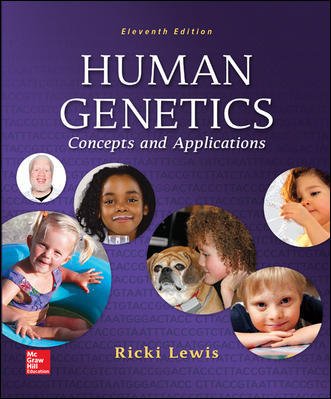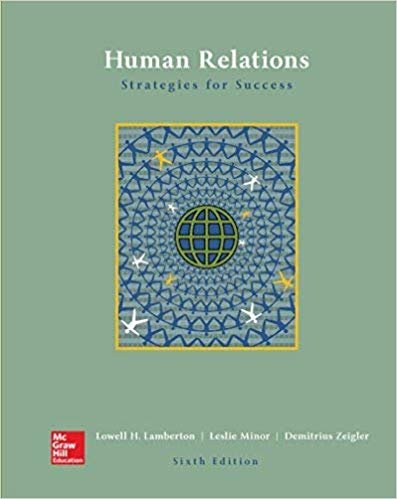HUMAN RESOURCES MANAGEMENT IN CANADA CANADIAN 12 TH EDITION BY COLE – TEST BANK
MULTIPLE CHOICE. Choose the one alternative that best completes the statement or answers the question. 1) The fourth phase of HRM is ongoing. Current management thinking holds that: 1) A) employees are quite similar in terms of the rewards they seek. B) employees are motivated primarily by compensation and benefits. C) employees are often the firm’s best competitive advantage. D) social influences are no longer important to most employees. E) the goals and aims of management must be achieved at all costs. Answer: C Explanation: A) B) C) D) E) 2) Which of the following apply to employers and employees across Canada? 2) A) Employment equity legislation B) Employment Insurance and human rights legislation C) Employment Insurance and Canada/Quebec Pension Plan D) Employment Insurance and employment legislation E) the Canada Labour Code Answer: C Explanation: A) B) C) D) E) 3) Taking a stand on anti-animal testing, human rights protection, and environmental conservation is an example of a firm’s: 3) A) mission statement. B) code of ethics. C) ethics policy. D) desire for legal compliance. E) sense of social responsibility. Answer: E Explanation: A) B) C) D) E) 1
4) If you were an HR professional in the 1940s or 1950s you would likely have had the following
activities added onto your portfolio of existing responsibilities: 4) A) running the payroll department. B) focusing on proactive management. C) handling orientation and performance appraisals. D) administering benefits. E) hiring and firing. Answer: C Explanation: A) B) C) D) E) 5) The Sandwich Generation refers to: 5) A) Generation Y. B) employees who have to bring their lunch to work because they can’t afford to eat out. C) individuals who are caught in the generation gap. D) employees with older and younger coworkers. E) individuals with responsibilities for young dependents and elderly relatives. Answer: E Explanation: A) B) C) D) E) 6) Canadians who are functionally illiterate are: 6) A) able to perform routine technical tasks without assistance. B) involved in academic upgrading through their place of employment. C) exacting a toll on organizations’ productivity levels. D) older Canadians who did not have the opportunity to attend school. E) no longer in the work force. Answer: C Explanation: A) B) C) D) E) 2
7) Being completely familiar with employment legislation, HR policies and procedures, collective
agreements, and the outcome of recent arbitration hearings and court decisions is most closely
related with which of the following HR activities? 7) A) formulating policies and procedures B) serving as a change agent C) serving as a consultant D) providing services E) offering advice Answer: E Explanation: A) B) C) D) E) 8) Revlex Inc. has decided to allow its front line workers to make decisions regarding the ordering of
certain supplies that were formerly made by managers. This initiative is an example of: 8) A) a change in organizational climate. B) job restructuring. C) workplace incentives. D) employee empowerment. E) management development. Answer: D Explanation: A) B) C) D) E) 9) The third major phase in personnel management was a direct result of: 9) A) government intervention following the depression. B) the increasing amount of government legislation. C) the impact of the human relations movement. D) a desire for professionalism. E) an increase in unionizing activities. Answer: B Explanation: A) B) C) D) E) 3
10) The process of analyzing manufacturing processes, reducing production costs, and compensating
employees based on their performance levels is found in: 10) A) scientific management. B) the scientific movement. C) the human resources movement. D) the human relations movement. E) none of the above. Answer: A Explanation: A) B) C) D) E) 11) Characteristics of a profession include: 11) A) many diverse points of view. B) certification of members. C) the existence of a common body of knowledge and certification of members. D) government regulation. E) competing codes of ethics. Answer: A Explanation: A) B) C) D) E) 12) The second phase of personnel management arrived in the 1930s with: 12) A) a decrease in unionizing activities and minimum wage legislation. B) health and safety legislation. C) minimum wage legislation. D) a decrease in unionizing activities. E) the decreasing momentum of the scientific management movement. Answer: C Explanation: A) B) C) D) E) 13) Human resources practices that support strategy include: 13) A) staffing practices. B) performance management. C) rewards practices. D) production scheduling. E) policies and procedures. Answer: D Explanation: A) B) C) D) E) 4
14) Which of the following was given emphasis in Frederick Taylor’s theory on HRM? 14) A) empowerment of employees B) work conditions C) compensation tied to performance D) job rotation E) cross-functional cooperation Answer: C Explanation: A) B) C) D) E) 15) Human resources management refers to: 15) A) concepts and techniques used in leading people at work. B) the management of people in organizations. C) concepts and techniques for organizing work activities. D) all managerial activities. E) management techniques for controlling people at work. Answer: B Explanation: A) B) C) D











Reviews
There are no reviews yet.